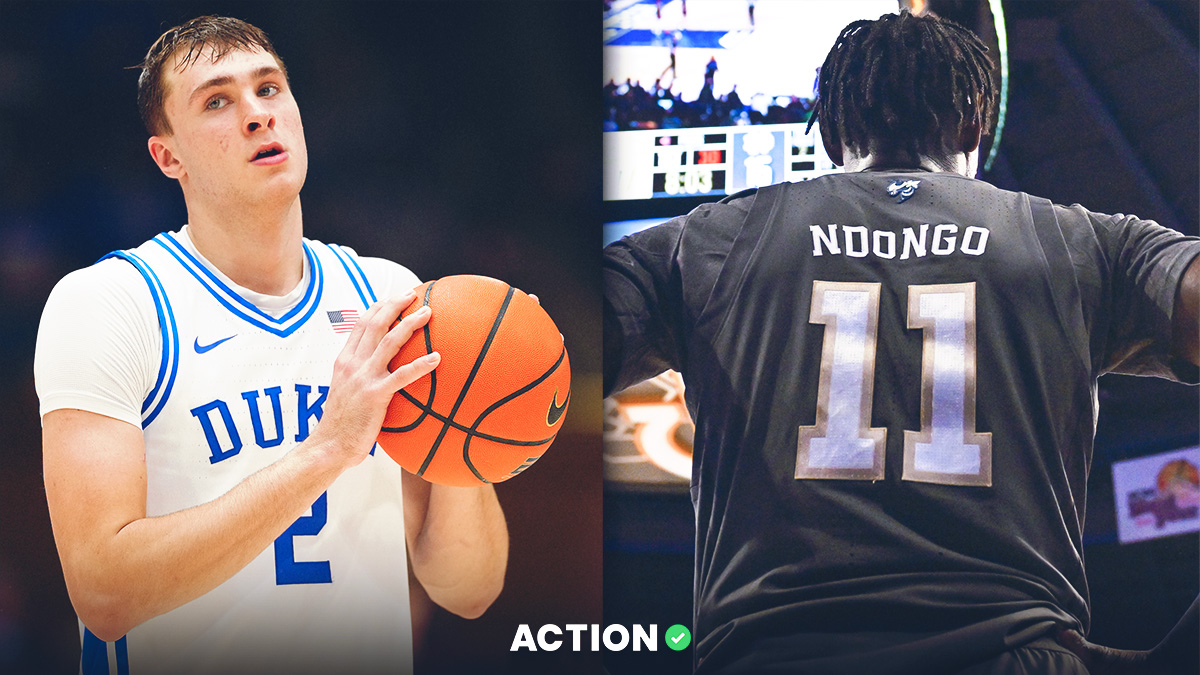The Duke Blue Devils take on the Georgia Tech Yellow Jackets in Atlanta, GA. Tip-off is set for 12 p.m. ET on ACC Network.
Duke is favored by 15 points on the spread with a moneyline of -1650. The total is set at 144.5 points.
Here are my Duke vs. Georgia Tech predictions and college basketball picks for December 21, 2024.
Duke vs Georgia Tech Prediction
My Pick: Under 145.5 (Play to 144.5)
My Duke vs Georgia Tech best bet is on the under, with the best odds currently available at FanDuel. For all of your college basketball bets, find the best lines using our live NCAAB odds page.
Duke vs Georgia Tech Odds, Spread
| Duke Odds | ||
|---|---|---|
| Spread | Total | Moneyline |
-15 -110 | 144.5 -108 / -112 | -1650 |
| Georgia Tech Odds | ||
|---|---|---|
| Spread | Total | Moneyline |
+15 -110 | 144.5 -108 / -112 | +950 |
- Duke vs Georgia Tech spread: Duke -15
- Duke vs Georgia Tech over/under: 144.5 points
- Duke vs Georgia Tech moneyline: Duke -1650, Georgia Tech +950
- Duke vs Georgia Tech best bet: Under 145.5 (Play to 144.5)
Duke vs Georgia Tech NCAAB Betting Preview
I love the under.
Georgia Tech is a dribble-heavy squad, primarily creating out of the pick-and-roll with Naithan George, Jaeden Mustaf, Javian McCollum and Lance Terry. The Yellow Jackets mostly prefer to get downhill toward the rim, where Baye Ndongo is waiting to finish off a roll — the big man averages nearly nine paint points per game.
Unfortunately, the Yellow Jackets have looked horrific against every power-conference defense on their schedule, averaging 62 points per game in five outings against KenPom top-50 competition. They are shooting 36% from the field in their four Quad 1 opportunities, with losses to North Carolina, Oklahoma, Cincinnati and Georgia.
Part of the problem was McCollum's injury, but he returned against Northwestern, and the offense still scored just 60 points on 47% shooting from the interior.
The bigger problem is the lack of floor spacers and shooters outside Terry. You can’t run a ball-screen-centric offense without spacing because the interior defenders can sag down and clog the driving lanes.
That problem becomes exacerbated without Kowacie Reeves Jr. He shot 38% from 3 with the team last year but will be out until mid-January with an ankle injury.
As mentioned, Georgia Tech has struggled to step up in competition, and I doubt the Jackets have any more success against the nation’s best defense.
Duke’s defense is terrifying.
The Blue Devils are so lengthy — ranking first nationally in average height (79.6”) — and versatile on that end of the court.
Caleb Foster and Tyrese Proctor are dependable point-of-attack defenders. Sion James is a dependable three-level wing defender. Cooper Flagg and Khaman Maluach are mobile, dominant rim protectors. Maliq Brown is a phenomenal “junkyard dog” type defender off the bench.
The Blue Devils run a switch-everything scheme that’s impossible to break because everyone can defend one through five while holding a significant size advantage. They excel against dribble penetration (.66 ball-screen-handler PPP allowed, 83rd percentile) and deny the rim as well as anyone (thanks to Flagg and Maluach's combined 2.4 blocks per game).
As you can imagine, Duke's defense is a brutal matchup for Georgia Tech’s offense.
Duke is due for some slight negative shooting regression from 3 on defense, but I doubt Georgia Tech’s lack of spacing exploits that. The Yellow Jackets would have to hit a million corner 3s to score a respectable number on Saturday.
However, I wouldn’t be surprised if Damon Stoudamire’s defense holds firm.
Duke runs a secondary motion-based offense predicated on off-ball stagger screens to pop open catch-and-shoot jumpers. But Georgia Tech runs a deep drop-coverage defense with Ndongo at the five, a scheme that overplays the perimeter and attempts to funnel shots into the mid-range.
In short, drop-coverage defenses are excellent at denying secondary-based scoring. Predictably, the Yellow Jackets rank in the top 100 nationally in catch-and-shoot attempts per game allowed (17) and off-ball screen points per game allowed (2.2).
Georgia Tech is also deep on the front line, which will be vital as it attempts to find a big man versatile enough to defend the three-level-scoring matchup nightmare that is Flagg. I think one of Ndongo or Doryan Onwuchekwa could somewhat contain Flagg, even if they have to tag-team him.
From a general schematic perspective, I suspect both squads will have issues running offense. I also don’t expect many second-chance opportunities against two borderline-elite defensive rebounding teams.
It’s also worth asking what the energy level for this game will be like.
Duke could be due for a letdown following five successive victories. Although, perhaps head coach Jon Scheyer and Co. are looking to avenge last year's early December road loss to the Yellow Jackets.
Meanwhile, Georgia Tech could struggle to adjust to the step up in size and competition after dropping 90 on a tiny UMBC squad this past Wednesday. I also imagine the home crowd will be slim with the fan base on Christmas break.
Before betting this under, I was worried about the projected pace. The Yellow Jackets tend to play fast because they struggle to defend in transition (1.26 PPP allowed, 359th nationally).
However, under Scheyer, Duke has evolved into a slow-paced, half-court-heavy squad that ranks 248th nationally in adjusted tempo. The Blue Devils don't care to run over the Yellow Jackets, as they'd rather beat their opponents with methodical half-court sets.
The Blue Devils are also elite in their transition denial (.79 PPP allowed, 97th percentile), typically forcing opponents into their half-court-heavy, 65-possession game script. I suspect they do the same to an inferior Georgia Tech squad.
I don’t think the market ever caught up to Duke’s change in pace under Scheyer. Since Coach K retired, Blue Devil games have stayed under 62% of the time (42-26-1). That mark increases to 73% in true road games (22-8), staying under the closing total by nearly five points per game.
Duke’s two true road games this year have stayed under, both against up-tempo squads (Arizona, Louisville), partially thanks to its elite transition denial. The defense and tempo control always travel, but the shooting and scoring often stay home.
The schematic matchup, situational spot and trends all point toward an ugly half-court grinder in Atlanta on Saturday. Duke and Georgia Tech are a combined 15-7 to the under this season, and I'll happily bank on more of the same.












